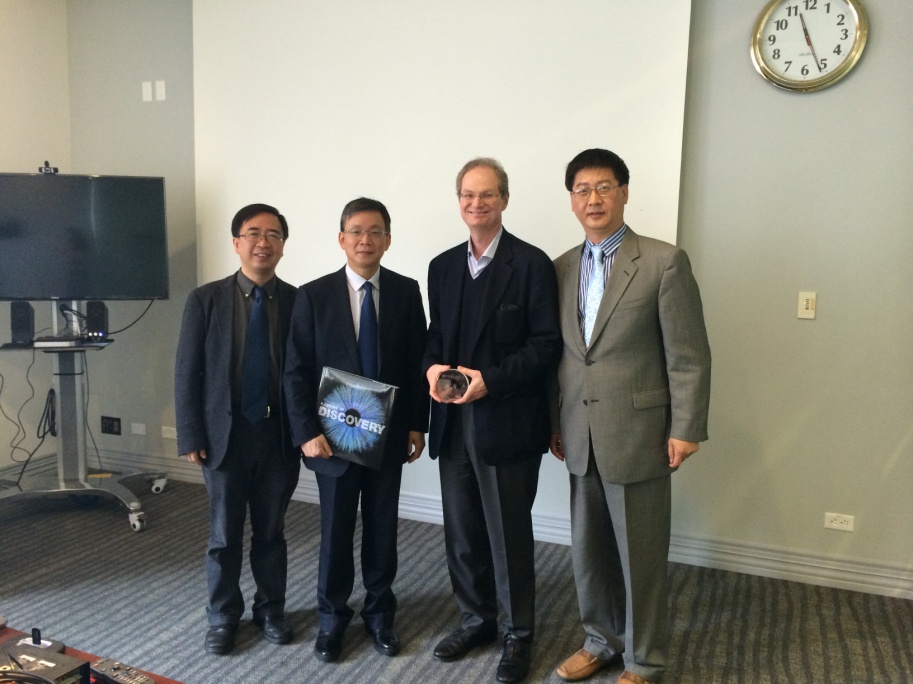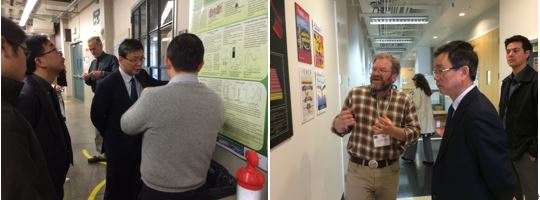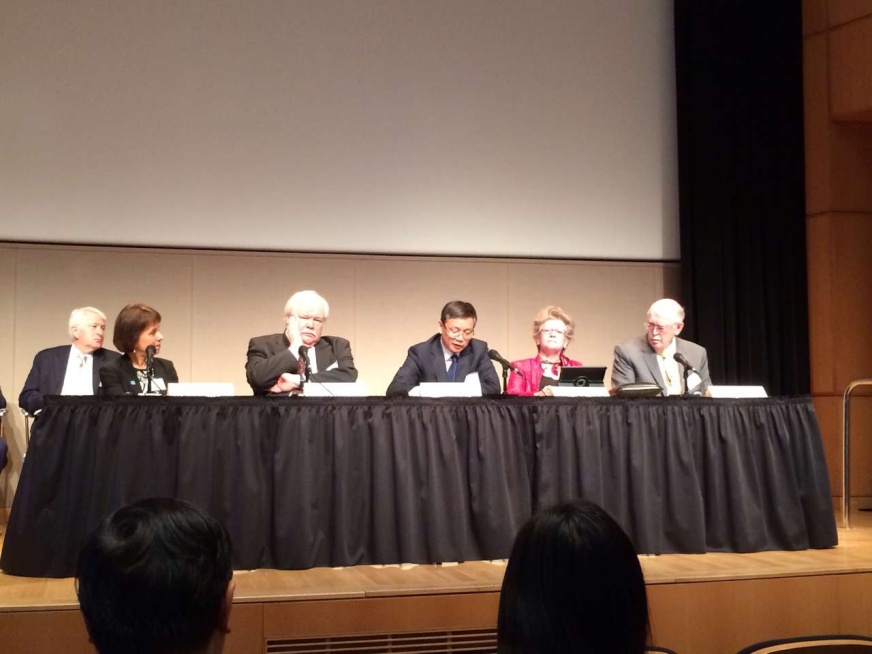A USTC delegation headed by President HOU Jianguo participated in a meeting of the Global Research Council and visited the Lawrence Berkeley National Laboratory (LBNL) from April 24 to 26. Members of the delegation included PAN Jianwei, vice president of USTC, and LU Yalin, vice director of the Hefei Center for Physical Science and Technology.
On the visit to LBNL on April 24, the USTC delegation met with Professor Paul Alivisatos, head of the laboratory. Prof. Alivisatos briefed the delegation on the mechanism of collaboration between his laboratory and the University of Berkeley and expressed his wish to collaborate with USTC as LBNL is open to scientists across the world. HOU talked about the two national laboratories and two big science facilities at USTC and discussed the possibility of collaboration between USTC and LBNL.

After their meeting, the delegation visited LBNL’s advanced light source laboratory and national center for electronic microscopy, and met with outstanding scientists engaged in multidisciplinary studies of chemistry, biology and nuclear magnetic resonance, discussing on collaborative projects.

President HOU Jianguo and Vice President PAN Jianwei attended the forum held by the Global Research Council (GRC) on April 26. The forum was aimed to explore the advancement of the mission of GRC by universities and research organizations and issues such as open access to scientific publications, and to provide recommendations for the general meting of GRC to be held in Beijing in May 2014. On the form, HOU shared his point that research universities have intrinsic needs for globalization with the solution of global problems as the goal of their development. However, their strategies for globalization should be specifically designed on the basis of their characteristics and the principle of mutual benefits. USTC with its strengths mainly in science and engineering, for instance, would have the globalization of its scientific research lead in its efforts to globalize its overall education programs. At present, many of its professors have close collaborative relations with scholars of other internationally renowned institutions, and their collaborations may promote student exchange, expand into various exchange programs in multiple disciplines and eventually develop into formal collaborative relations between universities. Such collaborations between professors have so far helped USTC establish formal collaborative relations with some 200 prestigious universities and research institutes such as Oxford University, Heidelberg University, Stanford University, and MIT. Meanwhile, the CAS-TWAS President’s Fellowship program has offered a good opportunity for USTC to train doctoral students from developing as well as other countries.

During the forum, HOU met with Professor Subra Suresh, President of the Carnegie Mellon University, who was one of the sponsors of GRC and former head of the National Science Foundation of the U.S. (NSF), and discussed with him plans for cooperation between USTC and the Carnegie Mellon University.
The Globa1 Research Counci1 was launched by NSF, Deutsche Forschungsgemeinschaft and some other organizations in Washington, D.C. in 2012 with the aim to discuss issues concerning research funding organizations throughout the world and promote international research collaboration through forums, etc. Since its establishment, GRC has made principled statements on research integrity and science quality review and announced action plans for open access. According to the resolution adopted by the second GRC meeting in Germany in May 2013, the third GRC meeting will take place in Beijing, China, in May 2014, under the joint sponsorship from the Chinese Academy of Sciences, the National Natural Sciences Foundation of China and the Natural Sciences and Engineering Research Council of Canada. The themes of the meeting will be “open access” and “training of young scientific researchers”.
(International Cooperation Committee)